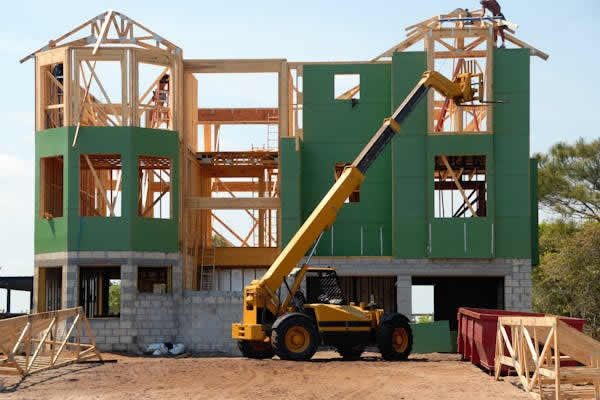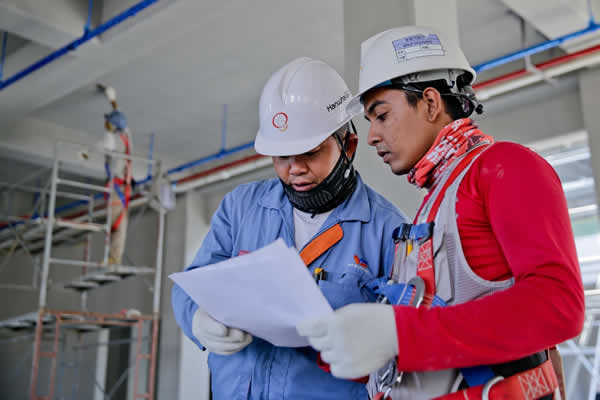In the realm of home construction, the significance of structural engineering cannot be overstated.

This specialized field of engineering is fundamental in ensuring that homes are not only designed to be aesthetically pleasing but are also safe, stable, and capable of withstanding the environmental forces they will face over their lifespan.
Structural engineering bridges the gap between architectural vision and the physical reality of building materials and environmental conditions, ensuring that homes meet rigorous safety standards.
By integrating principles of physics and engineering, structural engineers play a pivotal role in safeguarding the wellbeing of residents and the longevity of the structure itself.
The concept of ensuring stability and safety through engineering is at the heart of creating spaces that are not just habitable but durable and secure against various stresses, from the weight of the structure itself to external factors like wind, seismic activity, and more.
Understanding Structural Engineering
Structural engineering is a subset of civil engineering that focuses specifically on the design and analysis of buildings and structures to withstand both the loads and forces they encounter during their use and the environmental conditions of their locations.
It encompasses a broad range of activities, from the initial analysis of a building site to the design of structural systems that include foundations, beams, columns, and other critical components.
The scope of structural engineering extends to the selection of materials, the determination of dimensions, and the calculation of pressures to ensure that structures are both efficient and robust.
The role of structural engineers in construction and design is multifaceted. They collaborate closely with architects, contractors, and other engineers to ensure that the envisioned design is feasible and safe.
They are responsible for creating detailed drawings and specifications that outline the construction of the structure, ensuring that it can withstand normal and extreme loading conditions without failure.

This includes considering the effects of gravity, wind, earthquakes, and temperature changes, among other factors. Structural engineers also oversee the construction process to ensure that the building is being constructed according to their designs and specifications.
The Main Types of Engineers in Construction
The construction of a home involves the collaboration of various types of engineers, each specializing in different aspects of the building process. Some of the main types of engineers regarding construction site include:
- Civil Engineers: Focus on the overall design and construction of the project, including site preparation, drainage, roads, and utilities.
- Structural Engineers: Specialize in designing and assessing the structural components of a home, ensuring stability and safety.
- Mechanical Engineers: Responsible for the design and implementation of mechanical systems, including heating, ventilation, and air conditioning (HVAC).
- Electrical Engineers: Design and oversee the installation of electrical systems, ensuring they meet safety standards.
- Environmental Engineers: Consider the impact of the construction on the environment and work to minimize negative effects, focusing on sustainable practices.
Among these disciplines, Structural Engineers hold a critical role in ensuring the stability of a home. They apply principles of engineering, physics, and materials science to design structures that safely resist loads and stresses.
Their specific contributions include determining the strength and durability of materials used in construction, designing support structures that distribute loads evenly, and ensuring that the home can withstand natural disasters such as earthquakes and hurricanes.
The expertise of structural engineers is essential in translating architectural concepts into safe, stable, and durable homes.
Ensuring Home Stability: The Process
Ensuring the stability of a home begins with a meticulous assessment of environmental factors that directly influence the design and construction process.
This includes evaluating the soil quality and type, which affects the foundation's design, as well as considering the local climate—such as the prevalence of moisture, temperature extremes, and the potential for natural disasters like earthquakes, hurricanes, or floods.

These assessments are critical in determining the specific challenges a structure might face and in designing solutions that ensure its stability and longevity.
The selection of materials and adherence to design principles for durability and strength are central to this process. Structural engineers choose materials that are not only suitable for the environmental conditions but also offer the best balance of strength, flexibility, and cost-effectiveness.
For instance, in areas prone to earthquakes, materials and design techniques that allow for movement without structural damage are preferred. Similarly, in humid climates, materials resistant to moisture and decay are prioritized.
The principles of design also play a crucial role, with engineers employing strategies such as redundancy, where multiple pathways support loads, and robustness, ensuring the structure remains stable even if individual elements fail.
Technology and software have become indispensable tools in the design and analysis of structural systems.
Advanced software suites enable engineers to model complex structures and simulate their response to various loads and environmental stresses. This computational approach allows for the optimization of designs, ensuring that structures are not over-engineered (which can be costly) or under-engineered (which can be dangerous).
The use of Building Information Modeling (BIM) software further enhances this process, facilitating a more integrated approach to construction that improves coordination, reduces errors, and allows for more efficient project management.
Innovations and Advancements
Recent innovations in structural engineering have significantly contributed to creating safer and more resilient homes.
One of the key advancements is the development of new materials and construction methods, such as high-performance concrete, which offers greater strength and durability, and cross-laminated timber, which provides a sustainable and flexible building material suitable for a wide range of climates.

Seismic retrofitting techniques have evolved, offering existing structures increased resistance to earthquake forces through the addition of braces, shear walls, and other reinforcing systems.
The integration of smart technology into structural systems represents another forward leap. Sensors embedded within structures can monitor the health of a building in real-time, detecting issues such as cracks or structural weaknesses early on. This proactive approach to maintenance can prevent minor issues from becoming serious problems, extending the lifespan of the structure.
Statistics and case studies from this year and last year highlight the impact of these innovations. For example, the adoption of seismic retrofitting techniques in earthquake-prone areas has led to a noticeable decrease in structural damages reported after seismic events.
Similarly, the use of sustainable materials and construction practices has seen an uptick, with a growing number of projects achieving higher levels of energy efficiency and environmental certification.
These advancements in structural engineering not only ensure the physical stability and safety of homes but also reflect the field's ongoing commitment to sustainability, resilience, and innovation.
The ability to adapt and incorporate new materials, technologies, and methodologies is key to meeting the challenges of modern construction and to safeguarding the well-being of occupants and the environment alike.
The Importance of Professional Expertise
The safety and longevity of a home critically depend on the expertise of licensed and experienced structural engineers. These professionals are not only versed in the principles of engineering but are also knowledgeable about local building codes, standards, and environmental challenges.

Their expertise ensures that the structural design of a home is both safe and efficient, minimizing risks and maximizing durability. The role of a structural engineer goes beyond mere compliance with regulations; it involves a commitment to safeguarding the lives of those who inhabit the structures they design.
Choosing the right structural engineer for your construction project is a pivotal decision. Homeowners and builders should look for engineers who are not only licensed in their jurisdiction but also have a proven track record of successful projects similar to their own.
Recommendations from architects, builders, and previous clients can provide valuable insights into an engineer's capabilities and professionalism.
Effective communication skills and the ability to collaborate with the entire construction team are essential qualities that can greatly influence the project's success.
Takeaway
Structural engineers are pivotal in transforming architectural visions into safe, stable homes capable of enduring nature's forces.
Their expertise in assessing environmental factors, selecting durable materials, and leveraging technological innovations ensures our homes are not merely shelters but resilient sanctuaries.
Investing in their skills is a commitment to safety, sustainability, and the future of home construction, emphasizing the critical role of professional engineering in building lasting legacies.
